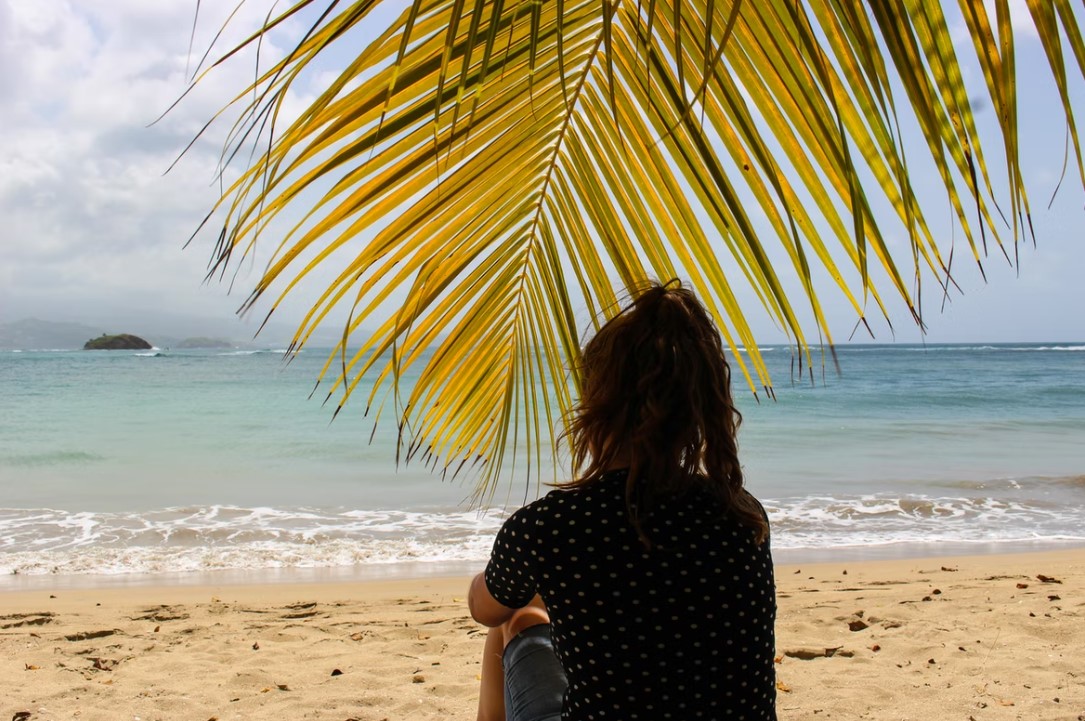7 Top-Rated Attractions in Martinique
Martinique is a mountainous marvel with the still-smoldering Mont Pelée, the volcano that spectacularly destroyed the previous city of St-Pierre in 1902. Martinique is a cosmopolitan and sophisticated island with a startling range of landscapes and atmospheres, world-class beaches, top-notch trekking, fantastic culinary experiences, an immense selection of activities, and vibrant cultural life.
While it suffers from congestion and urban expansion in certain areas, especially in and around the bustling city of Fort-de-France, life – and travel – becomes more tranquil as one travels north or south through some of the island’s most beautiful countryside. The rainforest, hilly north is the most impressive, but the south has its own natural treasures, including beautiful coves and kilometres of beautiful beaches.
List of 7 Top-Rated Attractions in Martinique
Grande Anse des Salines, Martinique
Grande Anse des Salines is the Caribbean you came to see, a magnificent arc of white sand. Palm palms sway over a sliver of sand that slowly slopes into a typical turquoise sea. It’s roughly 5 kilometers south of Ste-Anne on the D9, with hundreds of parking places well back from the beach. In the shade, snack cafes and artisan sorbet vendors give food, but the area is largely underdeveloped – a bit of beautifully raw nature.
Grande Anse des Salines takes its name from the enormous salt pond that runs alongside it, Étang des Salines. Local fauna has been identified and observation stations have been established.
Jardin de Balata, Martinique
This mature botanical garden in a rainforest setting, located 10 kilometers north of Fort-de-France, is one of Martinique’s top attractions and would delight anybody with even a passing interest in the island’s plant life. The hour-long stroll around the garden is well-marked, and children will enjoy the tree walk and fish ponds. Otherwise, this is a peaceful location with rattling bamboo, hummingbirds, stunning vistas down to the sea, and rustling tropical foliage (unless you happen to come across a cruise trip).
A decent gift store and restaurant are available, as well as plenty of free parking. Take a suburban bus (€1.50, 20 minutes) from Rue André Aliker to reach here via public transit from Fort-de-France.
Zoo de Martinique
This zoo–botanical garden–historical site, one of northern Martinique’s most popular attractions, practically provides you three for the price of one. Enclosures and cages hold monkeys, parrots, butterflies, jaguars, flamingos, and cougars among the ruins of a sugar mill devastated in the 1902 eruption of Mont Pelée. Myriad tropical plants provide color to the landscape, and there is information about the mill’s history and collapse throughout. It’s impossible to miss if you’re in the vicinity.
Musée de la Banane, Martinique
This museum is dedicated to all things banana and covers the journey of the world’s favorite fruit from plantation to the shopping basket, and it’s a ‘peeling’ attraction in Ste-Marie. While you shop the banana-themed merchandise, munch on as many free bananas as you like, while the youngsters enjoy hands-on displays. Then visit the banana park, which is home to a variety of banana plants kinds ranging from Cameroon frying bananas to delicious tiny fruits. The trip concludes at a restaurant that serves a variety of banana-based cuisine.
Other attractions include art-deco murals touting the benefits of the Martinique-Guadeloupe banana, watching hummingbirds flutter between the park’s massive banana trees, and a gift store selling banana ketchup and banana fridge magnets, and a café serving banana-infused drinks.
Musée de la Pagerie, Martinique
Marie Josèphe Rose Tascher de la Pagerie, the future Empress Josephine of France, was born on this old sugar estate. Josephine’s childhood bed and other mementos are on display in a lovely stone house that was originally the family kitchen. Other structures house the Bonaparte family tree, vintage sugarcane machinery, and Napoleon’s love letters to Josephine.
Multilingual guides recount anecdotes about Josephine’s life, such as the doctoring of the marriage certificate to make Josephine, who was six years Napoleon’s senior, appear to be the same age as her husband.
You may explore the ruins of the ancient mill right across the street from the museum for free.
Theater Ruins, St-Pierre
The remains of St-18th-century Pierre’s theatre are the most magnificent. While the majority of it was destroyed in the 1902 eruption of Mont Pelée, there is enough left to give an idea of the structure’s previous magnificence. It used to accommodate 800 people and welcomed theatre troupes from all around France. You may peep down into the tiny, thick-walled prison cell that housed Louis-Auguste Cypris, one of the town’s three survivors, on the northeastern side of the remains.
Look for Madeleine Jouvray, a student of Rodin, who made a sculptural sculpture depicting the town’s misery in 1917.
The Quartier du Figuier, situated along Rue Bouillé, is another region rich in ruins.
Plage Anse d’Arlet
This beautiful length of dark-golden sand in front of Anse d’Arlet Bourg is bordered by the village’s 18th-century church and is one of Martinique’s most beautiful swimming spots. Restaurants and bars line the beach, and it’s rarely difficult to locate a private space behind the many trees that line the shore.
If you looked through the holiday brochures before coming to Martinique, you’re likely to have seen the view of the church and beach from the end of the pier, which is one of the island’s most stunning panoramas and an ideal selfie destination. On weekends, weddings flow out onto the square, accompanied by a Creole beat.
It’s a favorite among vacationing families.


0 Comment